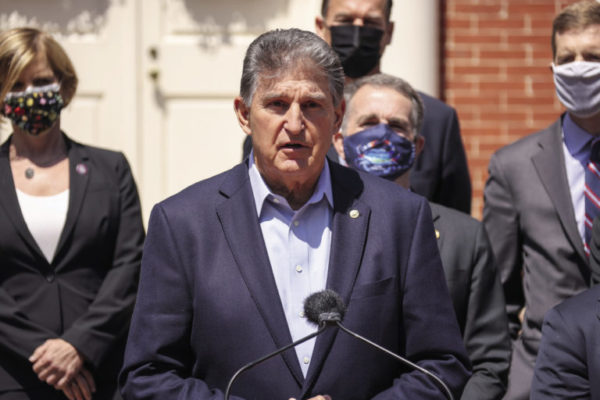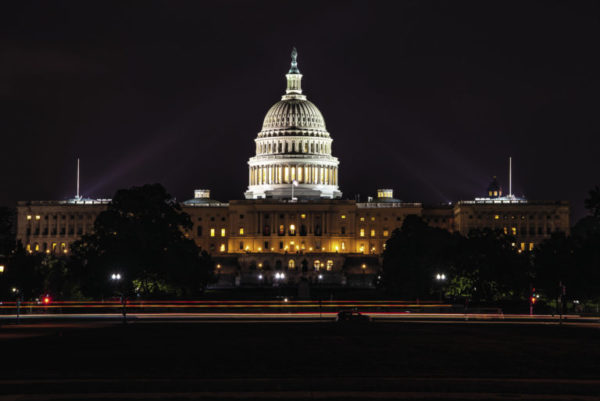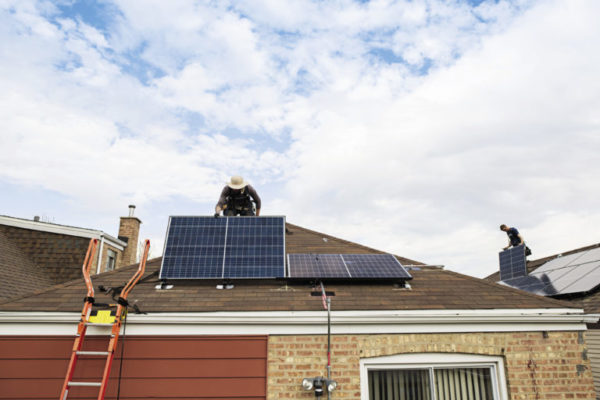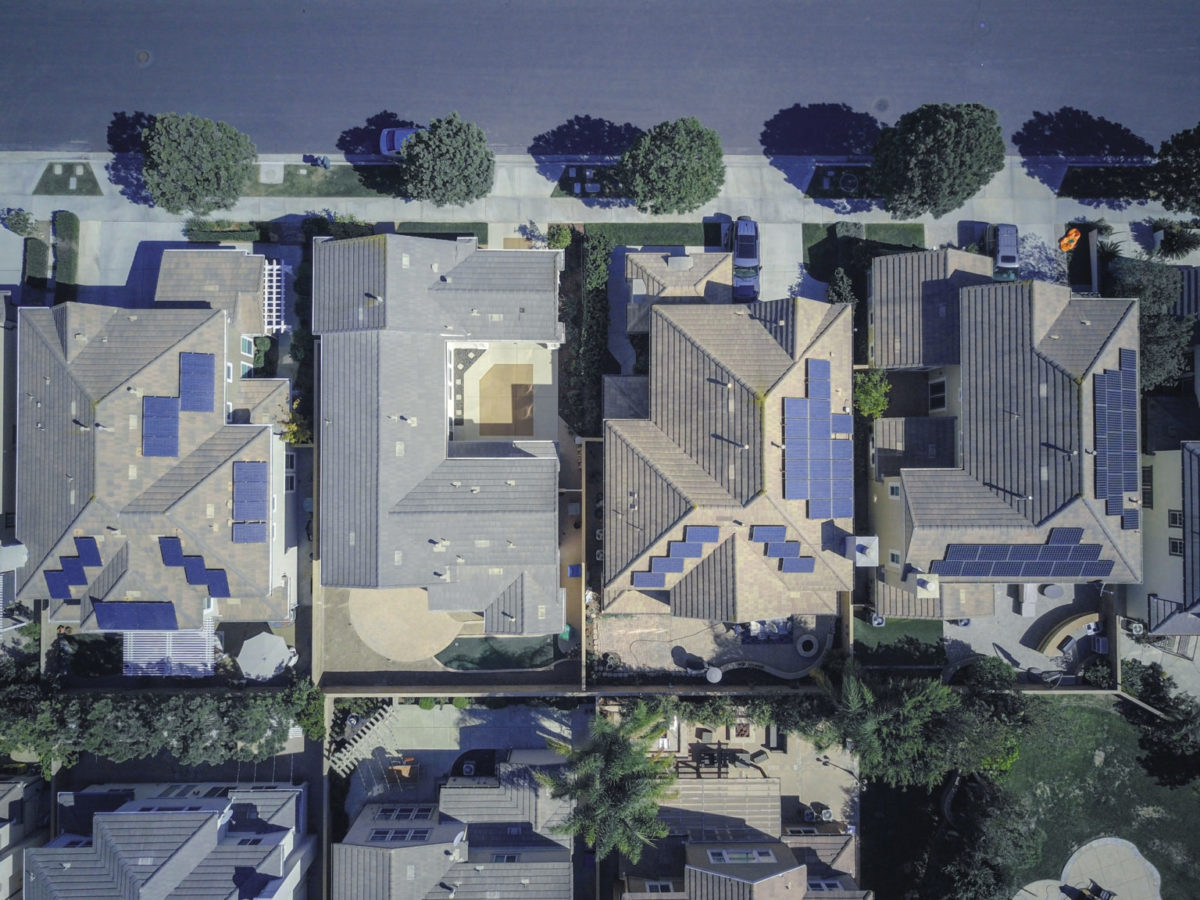The Build Back Better (BBB) Act, which would stand as one of the Biden administration’s most important pieces of legislation, has promised to bring the United States into a new era. It would rebuild crumbling infrastructure, boost clean energy initiatives, revitalize the country’s workforce, and provide tax relief to working families. Democrats assumed a confident, results-driven posture on the announcement of the bill, vowing that they would do all it takes to get the $3.5 trillion in spending passed.

Image: Flickr
Unprecedented investment
In October, the initial $3.5 trillion package included a proposed $555 billion for climate and clean energy initiatives – an unprecedented investment in the nation’s infrastructure. Included in the framework were 10-year expanded tax credits for utility-scale and residential clean energy, storage and transmission, clean transportation, and decarbonized energy manufacturing. It set aside $105 billion for climate resilience – working to mitigate damages from wildfires, droughts and hurricanes – and established a Franklin D. Roosevelt-inspired Civilian Climate Corps of over 300,000 working Americans.
Also included in the bill was $110 billion in incentives and investments in clean energy technology, manufacturing, and supply chains. Targeted incentives were designed to support full domestic value chains, like solar module manufacturing and lithium battery recycling. Specifically, domestic production of PV modules would be incentivized at $0.07/W, cells at $0.04/W, PV wafers at $12/m², and polysilicon at $3.00/kg. Additional incentives were added for solar trackers, purlins, inverters from residential to utility-scale.
The White House said its proposal would deliver “well over 1 gigaton” of greenhouse gas emissions reduction in 2030. The legislation was pitched as the roadmap to the United States meeting its climate goals – which are centered around a 50% to 52% reduction in greenhouse gas emissions below 2005 levels in 2030.
As proposed, the October framework for BBB would cut the cost of installing residential rooftop solar by 30%, the White House claimed, reducing the payback period by around five years. Electric vehicles built in the United States would be met with an average tax credit of $12,500 for American families.
“The Build Back Better framework contains the most ambitious and transformational clean energy policies we’ve ever seen from Congress,” Abigail Ross Hopper, president and CEO of the Solar Energy Industries Association (SEIA), said when the October framework was released. She called on Congress to “come together and pass this momentous legislation as soon as possible.”
Jason Burwen, the interim CEO of the US Energy Storage Association, said that with new manufacturing incentives available for batteries and federal procurement of next-generation long-duration storage, the framework would “supercharge efforts to rapidly transition to clean energy while building a robust energy storage supply chain here at home.”
In a November interview with pv magazine USA, Maxeon Chief Revenue Officer Mark Babcock said the company was exploring US-based manufacturing. Babcock said a 3GW cell facility could be online by 2023, but the policy landscape needed improvements for the plan to go through.

Reductions, renegotiations
It appeared that the Biden administration was on track to secure a victory, and all that was needed was party unity among Democrats to pass BBB. Negotiations with Republicans and moderate Democrats resulted in the $3.5 trillion plan being reduced $2 trillion by late December. The original top-line number was expected to come down, but this new price level marked a significant conciliation to Arizona Democratic Senator Kyrsten Sinema and Joe Manchin, who feared the spending would drive outsized inflation and further increase national debt.
Sentiment was strong that the moderate Democrat holdouts were pleased with the changes and that the simple majority would be achieved to pass BBB. Then, on Dec. 19, Manchin shocked the nation as he stated he “cannot vote” for the legislation in its current form. White House Press Secretary Jen Psaki said the senator’s comments are “at odds with his discussion this week with the president, with White House staff, and with his own public utterances.” The day after Manchin’s announcement of withdrawing his must-have vote, solar stocks fell steeply, with First Solar down 8%, Sunrun nearly 7%, and SunPower about 7%.
Senator Manchin is famously moderate for a Democrat, and has ties to the coal industry, which serves as a backbone of West Virginia’s economy. He argued for a further-reduced $1.75 trillion proposal, effectively cutting the original plan in half. The White House said it was not interested in making further cuts, and that it would stand by its $2 trillion proposal. This, right before the holiday recess, put BBB back on the shelf.

Image: Sunrun
Image: Sunrun
Relief in 2022?
Pain is already being felt by the solar industry. Analysts are predicting relief, but perhaps not until later in the year. The Invesco Solar ETF has tumbled 40% since BBB was shelved. Inflation concerns, supply chain constraints, and the possibility of multiple interest rate hikes throughout the year are further limiting growth opportunities.
Making matters more difficult, the proposed decision for California’s Net Energy Metering (NEM) 3.0 has been described by grid experts and energy leaders as a “proposed dystopia” and a “tax on the sun.” California, which represents about 50% of the nation’s rooftop solar market, was instrumental in the US solar industry’s maturation to the 230,000+ workforce it has today, per the Interstate Renewable Energy Council (IREC).
EQ analysts conservatively predict a 57% to 71% overall reduction in solar value if NEM 3.0 passes as planned. A recent SolarReviews-run survey of 4,000 Californians found that 95% of active solar shoppers were no longer interested in buying solar after viewing the new cost assumptions.
The US solar industry’s outcry at the development has been echoed by environmental groups and caused a postponement of the date on NEM 3.0 from late January to late February, at the earliest. The industry will watch NEM 3.0 closely as BBB negotiations restart. Brandon Conard, managing partner at SolRiver Capital, said that one potential hiccup caused by Manchin’s sudden withdrawal of support for BBB is pricing difficulties. Conard said a lot of the project bids he was seeing in late 2021 were likely pricing in the assumptions of BBB and were too low if the legislation fails. He said that many large-scale solar development contracts are now at risk of not being honored and will likely be re-traded or stalled. Conard said SolRiver did not factor BBB into its its bids, but that those that had done so may face sentiments of bad will or mistrust after the Manchin-imposed speedbump.
Adding insult to injury, the cost hikes the solar industry incurred in 2021 continue to bite. Both shipping costs and module prices have increased throughout the year and little relief is in sight. Conard said that in 2020 SolRiver could purchase bifacial panels shipped-to-site at $0.28/W, but this year the same panels cost around $0.42/W. He said he doesn’t see price relief until late 2022 and expressed a sentiment that BBB may take that long to come around, too. “Major US solar policy items seem to generally pass in December,” he said.
There are some signs that in 2022 the supply chain squeeze may improve and result in stronger installation figures in 2023. However, the United States needs urgent action to achieve its climate goals. The US Department of Energy has reported that solar deployment will need to accelerate at a rate at least three-to-four times faster through 2035 to reach a goal of 40% electricity generation share, up from today’s 3%.
Trying again
Democrats will now try once more to find a legislative package that will suit the needs of Manchin and other moderates. In November, a major piece of legislation and spending was passed in the “bipartisan infrastructure bill,” allocating $1 trillion to updating transportation, roads, and bridges.
Suzzane Leta, head of policy and strategy for SunPower, wrote that the BBB needs a new sales pitch. She said it is currently pitched as a “social bill,” with provisions for childcare, housing, and education. Leta wrote that the bill should be pitched instead as a climate-focused roadmap for resilience across the political, geographic, and income-level spectrum.
Manchin said that he is once again open to talks but wants the conversation to start over “from scratch.” SolarReviews projects the passing of the package would lead to the creation or continuance of more than 1 million solar jobs. For now, the nation awaits resolution in what would be the most significant climate and energy legislation in US history.
This content is protected by copyright and may not be reused. If you want to cooperate with us and would like to reuse some of our content, please contact: editors@pv-magazine.com.









By submitting this form you agree to pv magazine using your data for the purposes of publishing your comment.
Your personal data will only be disclosed or otherwise transmitted to third parties for the purposes of spam filtering or if this is necessary for technical maintenance of the website. Any other transfer to third parties will not take place unless this is justified on the basis of applicable data protection regulations or if pv magazine is legally obliged to do so.
You may revoke this consent at any time with effect for the future, in which case your personal data will be deleted immediately. Otherwise, your data will be deleted if pv magazine has processed your request or the purpose of data storage is fulfilled.
Further information on data privacy can be found in our Data Protection Policy.